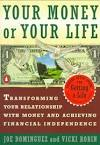"The Sixth Extinction: An Unnatural History" is a book written by Elizabeth Kolbert, a Pulitzer Prize-winning journalist. The book is a comprehensive examination of the ongoing extinction of species around the world, and the impact that human activity has had on the natural world.
The book begins by discussing the five previous mass extinctions that have occurred on Earth, and how they have shaped the planet's biodiversity. Kolbert then shifts focus to the current extinction event, which is happening at an unprecedented rate and is primarily caused by human activity. She examines the various ways in which humans are causing species to disappear, including habitat destruction, pollution, and the introduction of invasive species.
One of the major themes of the book is the impact of climate change on the natural world. Kolbert discusses how rising temperatures and changing weather patterns are affecting species and ecosystems around the globe. She visits various locations around the world, from the melting Arctic to the coral reefs of the Caribbean, to document the effects of climate change on the environment.
Another major theme of the book is the impact of human development on biodiversity. Kolbert visits cities and towns around the world and examines how urbanization and development are causing species to disappear. She also examines the effects of pollution and the use of pesticides on the environment, and how they are contributing to the extinction of species.
Throughout the book, Kolbert also explores the efforts of scientists and conservationists to understand and address the current extinction event. She visits research stations and nature preserves around the world, and speaks with experts in the fields of biology, ecology, and conservation. She also examines the challenges and limitations of conservation efforts, and the ethical and practical issues surrounding the preservation of endangered species.
One of the most powerful themes of the book is the interconnectedness of all life on Earth. Kolbert illustrates how the loss of a single species can have ripple effects throughout an ecosystem, and how the extinction of one species can lead to the extinction of others. She also emphasizes the importance of biodiversity for the survival of all species, including humans.
The book ends on a sobering note, as Kolbert acknowledges that it is unlikely that the current extinction event can be stopped or reversed. However, she stresses the importance of continuing to work towards conservation and sustainability in order to mitigate the worst effects of the extinction and to preserve as much biodiversity as possible.
In conclusion, "The Sixth Extinction: An Unnatural History" is a powerful and thought-provoking book that provides a comprehensive examination of the ongoing extinction of species around the world. It is a powerful reminder of the impact of human activity on the natural world and the importance of taking action to preserve biodiversity. Kolbert's writing is both scientific and accessible, making the book an important read for anyone interested in understanding the current extinction event and its implications for the future of life on Earth. The book is not only informative but also emotional that makes the reader think about the future and the actions that need to be taken to preserve our planet for future generations.












